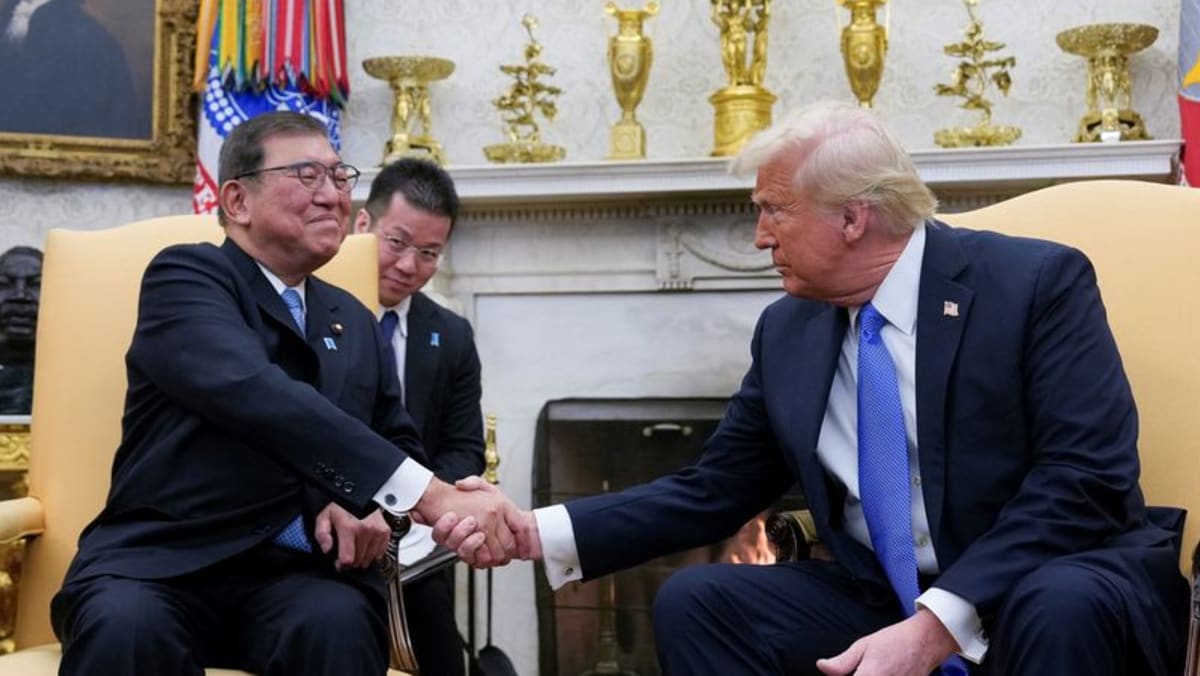US President Donald Trump has struck a trade deal with Japan that lowers tariffs on auto imports and spares Tokyo from punishing new levies on other goods, in exchange for a US$550 billion package of US-bound investment and loans.
Trump on Tuesday (Jul 22) hailed the “massive” deal with Japan as “perhaps the largest deal ever made”.
“#Mission Complete,” Japan’s top trade negotiator Ryosei Akazawa wrote on X following a meeting with Trump at the White House.
Trade between the two countries totalled nearly US$230 billion in 2024, with Japan running a trade surplus of nearly US$70 billion. Japan is the fifth-largest US trading partner in goods, US Census Bureau data shows.
Here’s what we know about the deal so far.
WHAT’S IN THE DEAL?
Trump, in a post on Truth Social, said Japan would “open” its economy to American autos and rice.
Crucially, Japanese autos, which account for more than a quarter of the country’s exports to the US, will see existing tariffs cut to 15 per cent from levies totalling 27.5 per cent previously.
Duties that were due to come into effect on other Japanese goods from Aug 1 will also be cut to 15 per cent from 25 per cent.
“We are the first (country) in the world to reduce tariffs on automobiles and auto parts, with no limits on volume,” Japanese Prime Minister Shigeru Ishiba told reporters.
Japan will keep its existing tariffs on imports of US agricultural products, but agreed to import more rice from the US within the existing tariff-free quota.
Steel and aluminium, subject to a separate 50 per cent tariff, were not included in the deal, said Japan’s Akazawa.
The trade deal also does not cover spending on defence – something Trump had pressed for.
The US$550 billion of investment into the US is part of a new Japan Investment America Initiative. It is aimed at boosting investment in economic security sectors including semiconductors, pharmaceuticals, steel, shipbuilding, critical minerals, energy, autos and AI technologies.
The sum was the upper limit of loan investments and guarantees that Japanese government state banks and agencies would make available to promote Japanese corporate investment in the US.
According to Akazawa, the agreement follows the idea of “investment over tariffs” proposed to Trump by Ishiba at their meeting in February.
WHAT WERE THE STICKING POINTS?
A contentious point in trade negotiations had been US rice exports to Japan. Trump had previously threatened tariffs on the country over what he called Japan’s reluctance to accept rice exports.
On Wednesday, a consensus was finally reached, with Japan agreeing to import more rice from the US – but within the tariff-free quota.
Under a World Trade Organization (WTO) “minimum access” framework introduced in 1995, Japan imports about 770,000 metric tons of rice tariff-free every year. Last fiscal year, the US accounted for 45 per cent of the total.
Ishiba said Japan would import more US grain within this framework.
In agreeing to the deal with the US, Ishiba stressed Tokyo’s success in protecting the agricultural sector.
“We made absolutely no sacrifice in the agricultural sector,” Ishiba told reporters.
Rice imports are a sensitive issue in Japan, and Ishiba’s government – which lost its upper house majority in elections on Sunday – had previously ruled out any concessions.
